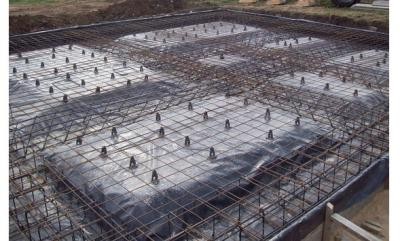
Foundation Design for Residential Buildings in Australia: Choosing the Right System for Stability
March 28, 2025
Author: Michael Safari
Why Are Foundations Crucial in Residential Construction?
A strong foundation is essential for structural stability, ensuring that residential buildings remain safe, durable, and resistant to environmental factors. In timber construction, selecting the right foundation type helps prevent settlement, moisture damage, and structural shifting.
This guide explores foundation types, material choices, soil considerations, and Australian standards for residential buildings.
Types of Foundations in Timber Residential Construction
Different foundation systems support various soil conditions and load requirements. Below are the most common types:
- Raft Slab
- Full concrete slab that spreads load evenly.
- Ideal for moderate soil conditions and areas with minor soil movement.
- Waffle Slab
- Features a grid-like pattern underneath for improved load distribution.
- Used in reactive soils (e.g., clay) to prevent cracking.
- Reduces concrete usage, making it a cost-effective option.
- Strip Footing
- A continuous foundation that runs under load-bearing walls.
- Best suited for stable soil conditions.
- Economical choice for single-story buildings.
- Joist and Bearer Footing
- Uses timber joists and bearers to elevate the structure.
- Helps improve airflow and prevent moisture damage.
- Common for raised timber homes in areas with poor drainage.
- Pad Footing
- Supports individual load points, such as columns or porch posts.
- Best for lightweight timber structures on stable soils.
Each foundation type is selected based on soil properties, structural loads, and environmental factors.
How to Choose the Right Foundation for Timber Homes?
The best foundation type depends on soil stability, moisture conditions, and load-bearing needs:
| Foundation type | Best for soil conditions | Structural benefits |
| Raft slab | Moderate soil movement | Evenly distributes loads |
| Waffle Slab | Expansive (clay) soils | Prevents foundation cracking |
| Strip footing | Stable soils | Cost-effective for smaller homes |
| Joist & bearer | Poor drainage areas | Elevates home to prevent moisture damage |
| Pad footing | Stable soil with isolated loads | Supports columns & specific load points |
Selecting the correct foundation ensures long-term structural durability and minimizes the risk of shifting or cracking.
What Materials Are Used in Foundation Construction?
- Concrete – The primary material for slab foundations due to strength & longevity.
- Steel Reinforcement – Adds tensile strength to concrete, improving durability.
- Treated Timber – Used in joist and bearer systems for moisture and pest resistance.
For timber-based foundations, using high-quality treated wood prevents decay and structural weakening over time.
How Soil Type Affects Foundation Design
Different soil conditions impact how a foundation should be designed:
- Clay Soils – Expand & contract with moisture changes. Deeper foundations or reinforced slabs are necessary.
- Sandy Soils – Provide good drainage but may require compaction to prevent shifting.
- Rocky Soils – Stable but require specialized equipment for excavation and adjustments.
Importance of Soil Testing
Before foundation construction, engineers conduct soil testing to:
- Assess soil composition & load-bearing capacity.
- Determine appropriate foundation depth & reinforcement needs.
- Prevent future structural movement & settlement issues.
Ensuring Proper Drainage for Foundations
Proper water management prevents erosion, moisture damage, and foundation instability.
Best Drainage Solutions for Foundations
- French Drains – Underground pipes redirect water away from the foundation.
- Proper Grading – Ensures water drains naturally instead of accumulating around the structure.
- Drainage Systems for Slab Foundations – Prevent moisture buildup beneath the concrete.
Without effective drainage, foundations can experience settlement, cracking, or moisture infiltration, leading to long-term structural problems.
Australian Standards for Foundation Design
In Australia, foundation design must comply with national building standards:
- AS 2870 – Residential Slabs and Footings – Covers foundation stability, design, and construction guidelines.
- AS 3600 – Concrete Structures Code – Regulates concrete foundation durability.
- AS 1684 – Timber Framing Code – Provides standards for timber-based foundation systems.
Following these regulations ensures that foundation designs are safe, durable, and compliant with Australian building laws.
Final Thoughts: Choosing the Right Foundation for Australian Residential Buildings
The foundation type you select will impact the stability, durability, and moisture resistance of your home. Proper design involves:
- Selecting the right foundation for the soil type.
- Using durable materials (concrete, steel, treated timber).
- Following Australian foundation design standards.
For expert structural engineering solutions in Melbourne, working with professionals ensures a foundation that lasts for decades.
📢 Need Expert Advice on Foundation Design?
At Fundament, we specialize in foundation engineering for residential buildings. Contact us today to ensure your home is built on a solid foundation!

